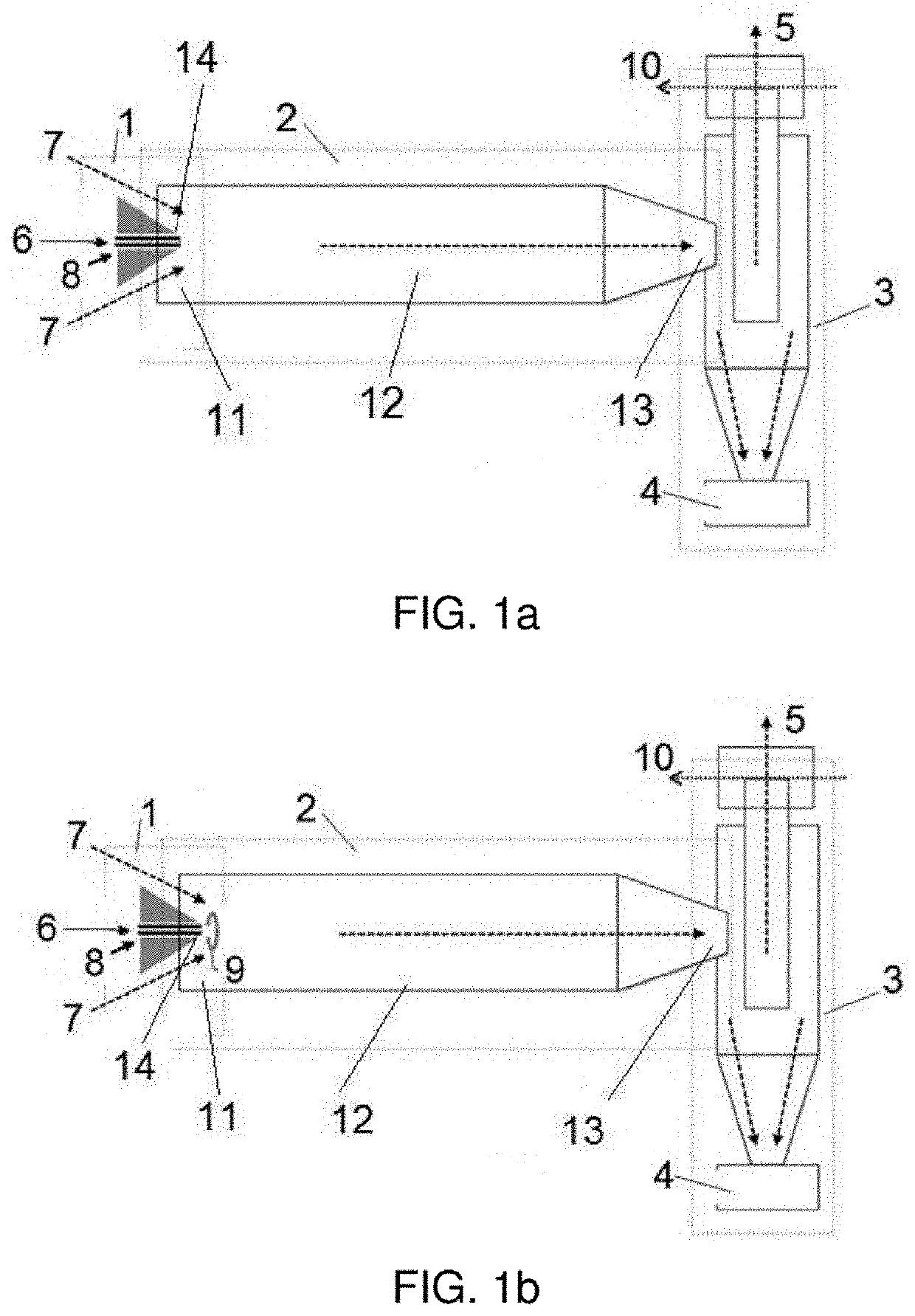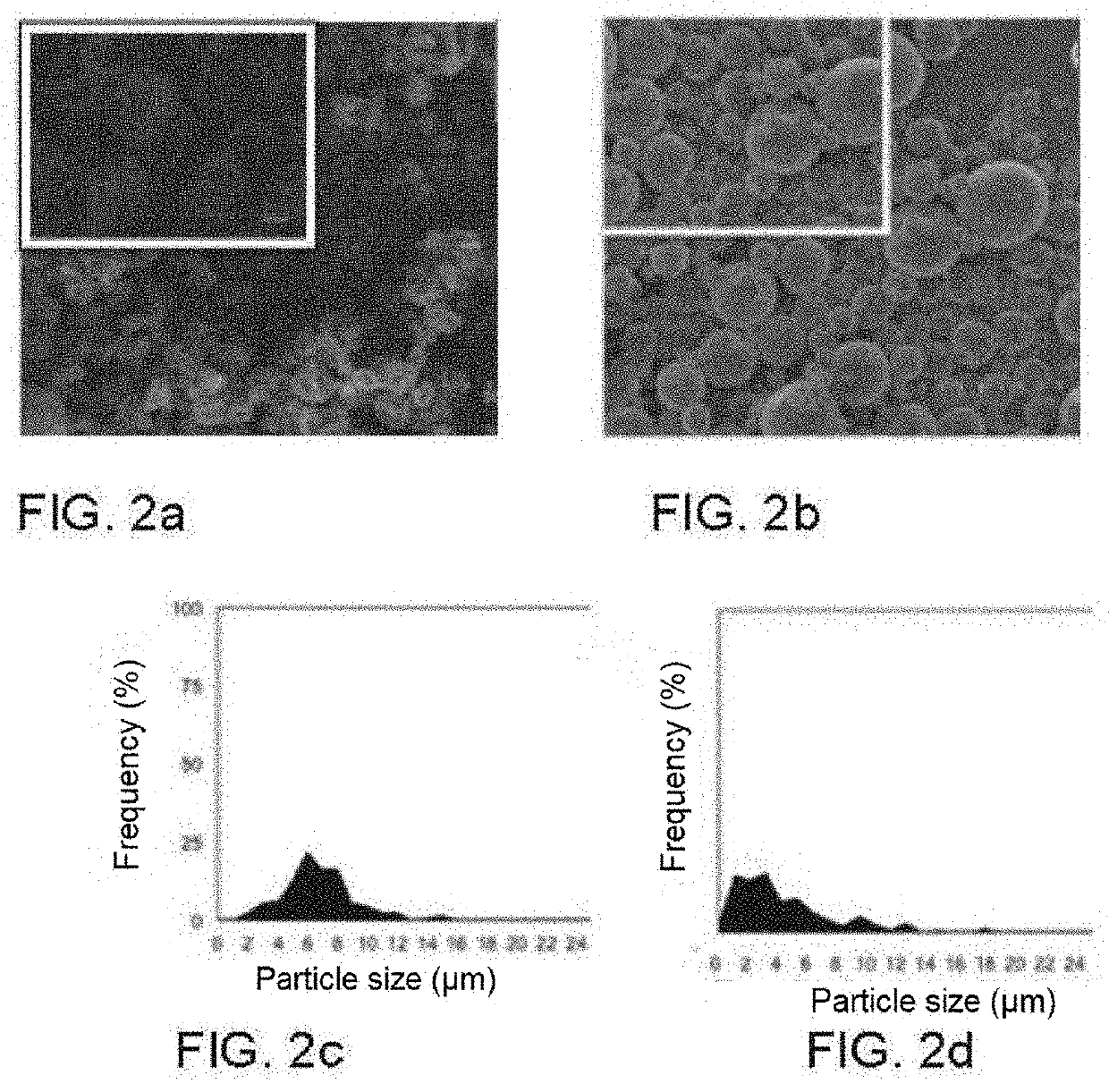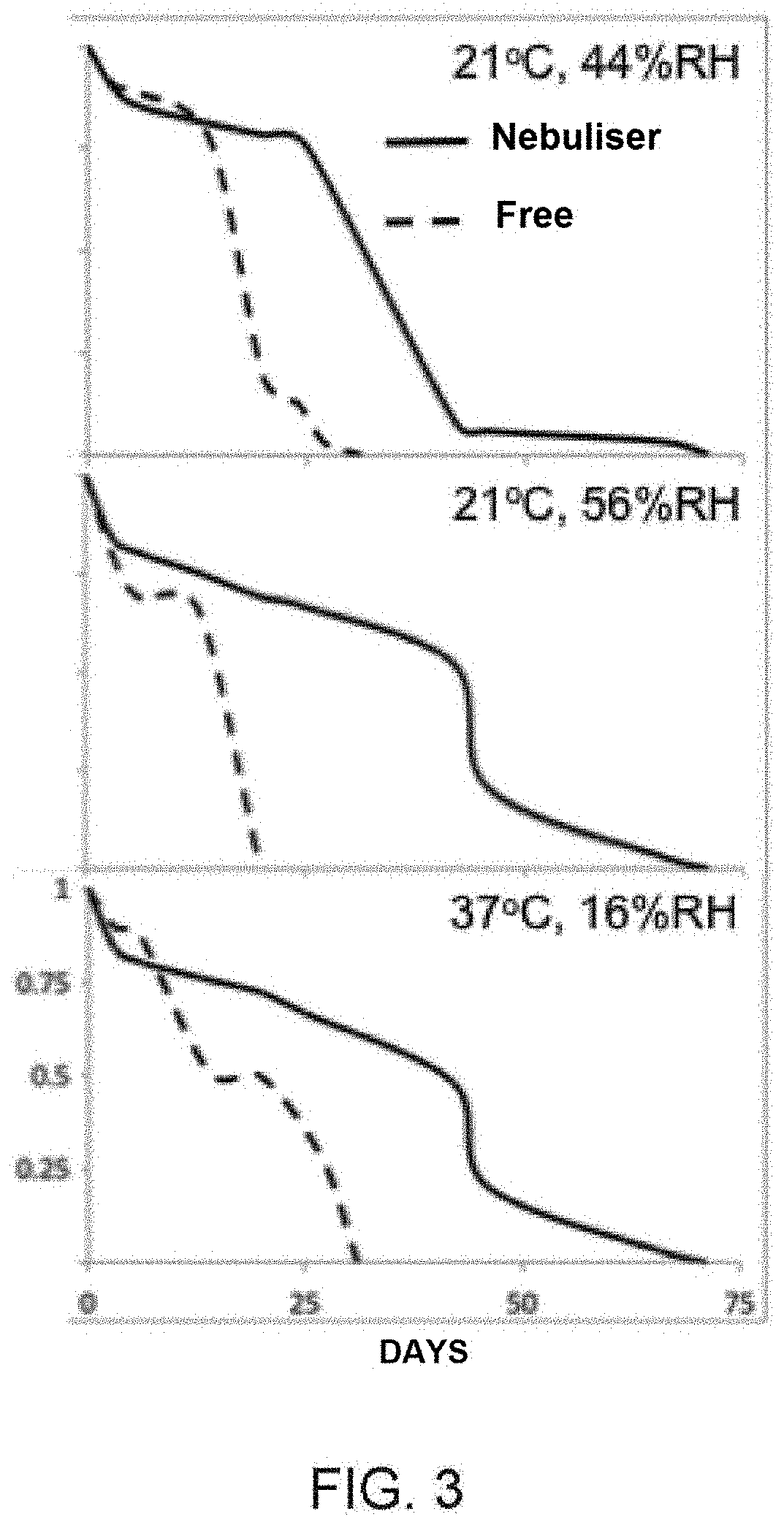System and method for industrial encapsulation of thermolabile substances
a technology of thermolabile substances and encapsulation methods, applied in the field of system and method for industrial encapsulation of thermolabile substances, can solve the problems of reversible process, high cost, limited work efficiency of stable products, etc., and achieves efficient separation of microcapsules, high yield, and efficient control of solvent evaporation
- Summary
- Abstract
- Description
- Claims
- Application Information
AI Technical Summary
Problems solved by technology
Method used
Image
Examples
example 1.1
Encapsulation of Omega-3 Using a Nebuliser as an Injector
[0095]In this example, a conventional nebuliser was used as an injection unit. Additionally, different natural polymer candidates are used to encapsulate omega-3 fatty acid and thus prevent its oxidation and the transmission of odours and flavours to food in direct contact, such as for example zein, pullulan, milk serum protein and modified maltodextrins (Pineflow® and Nutriose®). The capsules generated using the materials with the greatest potential, zein and pullulan, can be seen in the SEM micrographs of FIGS. 2a and 2b, respectively. The optimum sizes can be observed in FIGS. 2c and 2d, within the range of 2-10 microns, in size distribution graphs, corresponding respectively to the micrographs of FIGS. 2a and 2b. The experimental parameters and ranges of use are shown in tables 1 and 2, respectively.
TABLE 1Experimental parameters and operating rangesof the method of example 1.1 using zein.Minimum valueMaximum valueParamete...
example 1.2
Encapsulation of Omega-3 Using an Electronebuliser as an Injector
[0097]In this exemplary embodiment, an electronebuliser was used as an injection unit and the same natural polymers of example 1.2 were used. In FIGS. 4a-4d the effect of the technical field on microcapsule geometry can be observed. More specifically, said figures show the microcapsules when an electric field is not applied (FIG. 4a), when the electric field is 1 kV (FIG. 4b), when the electric field is 5 kV (FIG. 4c) and when the electric field is 10 kV (FIG. 4d). Therefore, it can be observed how an optimised electric field enables greater control over microcapsule geometry, allowing highly spherical geometries, high monodispersity and size control. In the case of zein, wherein in example 1.1 it can be observed that the capsules collapse, it can now be observed how they maintain their spherical structure due to the charge provided by the electric field, which prevents the droplets from collapsing during the evaporati...
example 2.1
Encapsulation of a Probiotic Using a Nebuliser as an Injector
[0107]In this exemplary embodiment, a nebuliser was used as an injection unit and milk serum protein as a polymer to encapsulate the probiotic. FIG. 7a shows a SEM micrograph showing the microcapsules obtained and FIG. 7b shows a graph with the size distribution obtained. Table 6 shows the experimental parameters and ranges of use of this example.
TABLE 6Experimental parameters and operating ranges of theprocessing of example 2.1 using a solution comprisingmilk serum protein, Tego ® and whole milk.Minimum valueMaximum valueParametersSolution flow rate1mL / h50L / hAir flow rate1LPM500LPMDrying gas flow rate10m3 / h100,000m3 / hSolutionLR0.05%w / w50%w / wWHS0.05%w / w50%w / wTego0.01%w / w10%w / wWhole milksolventSolvent
PUM
| Property | Measurement | Unit |
|---|---|---|
| voltage | aaaaa | aaaaa |
| voltage | aaaaa | aaaaa |
| voltage | aaaaa | aaaaa |
Abstract
Description
Claims
Application Information
 Login to view more
Login to view more - R&D Engineer
- R&D Manager
- IP Professional
- Industry Leading Data Capabilities
- Powerful AI technology
- Patent DNA Extraction
Browse by: Latest US Patents, China's latest patents, Technical Efficacy Thesaurus, Application Domain, Technology Topic.
© 2024 PatSnap. All rights reserved.Legal|Privacy policy|Modern Slavery Act Transparency Statement|Sitemap



